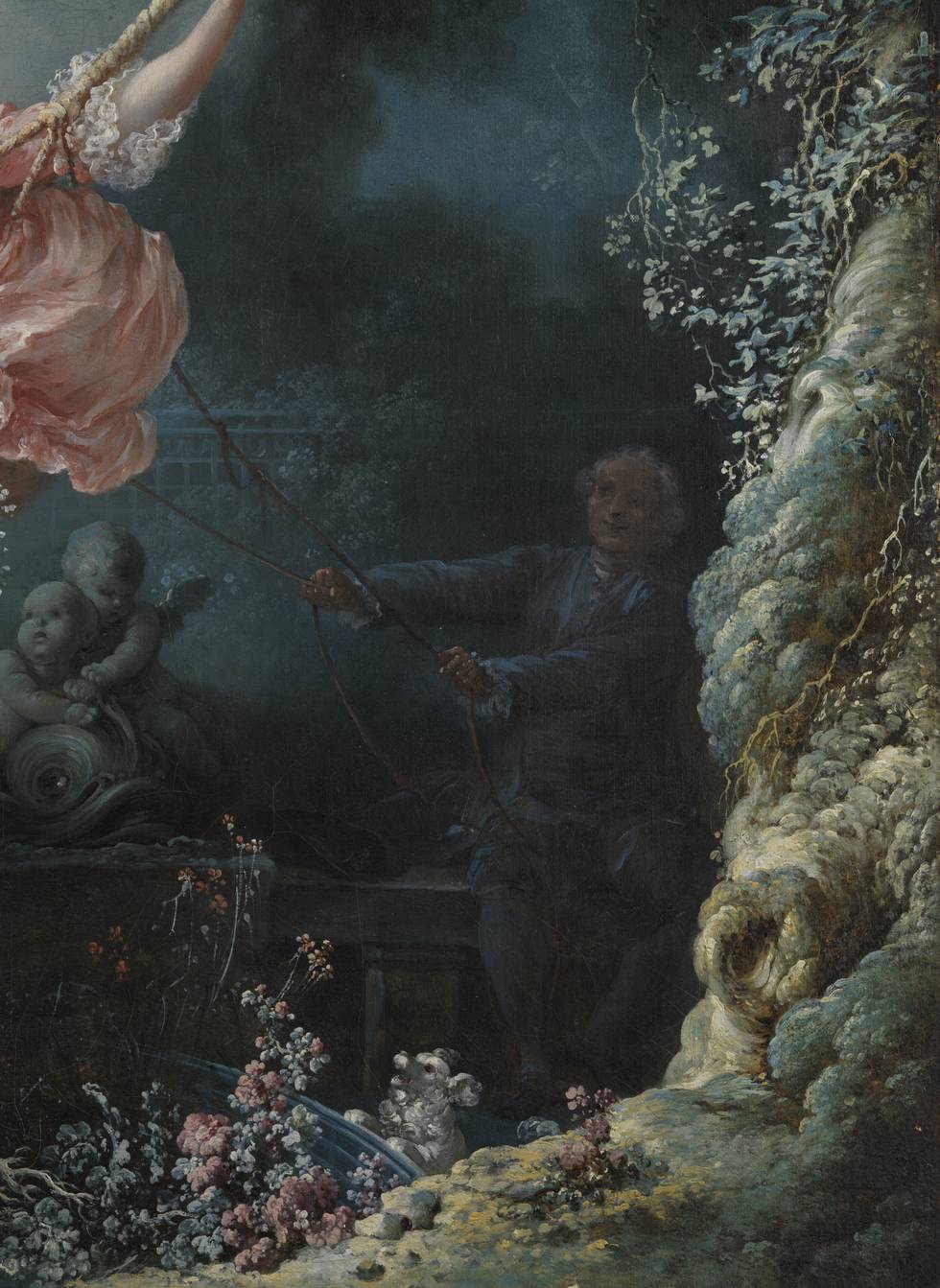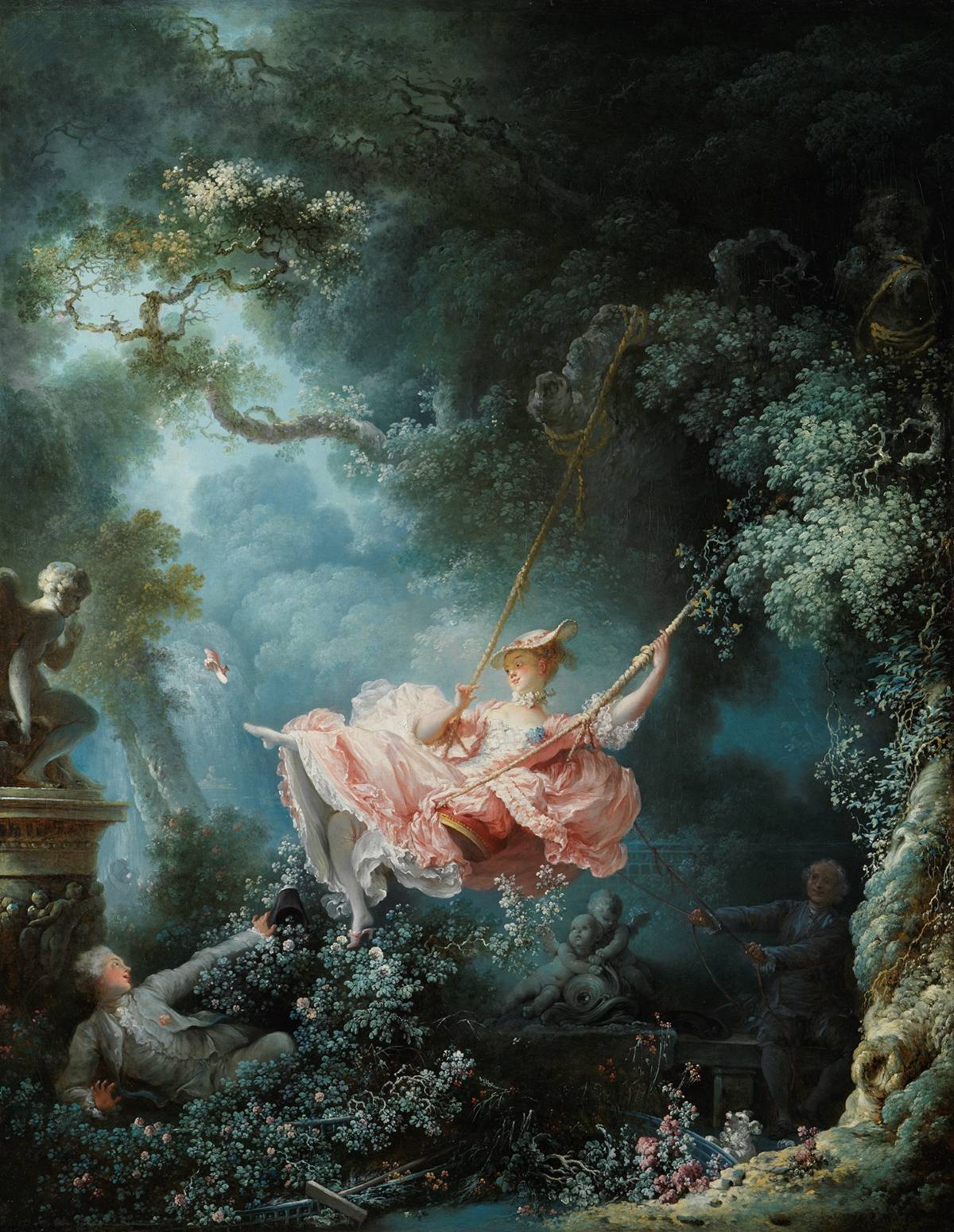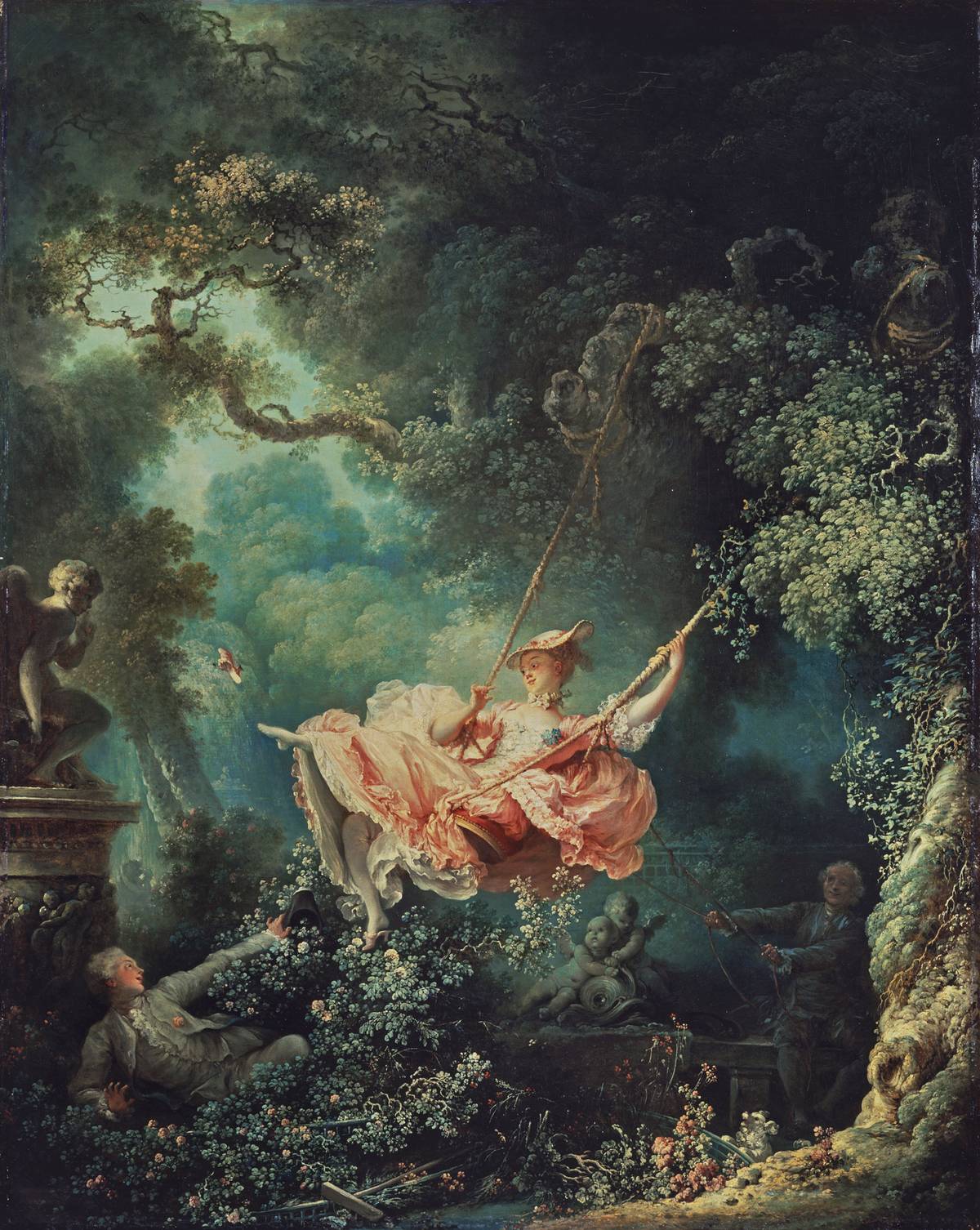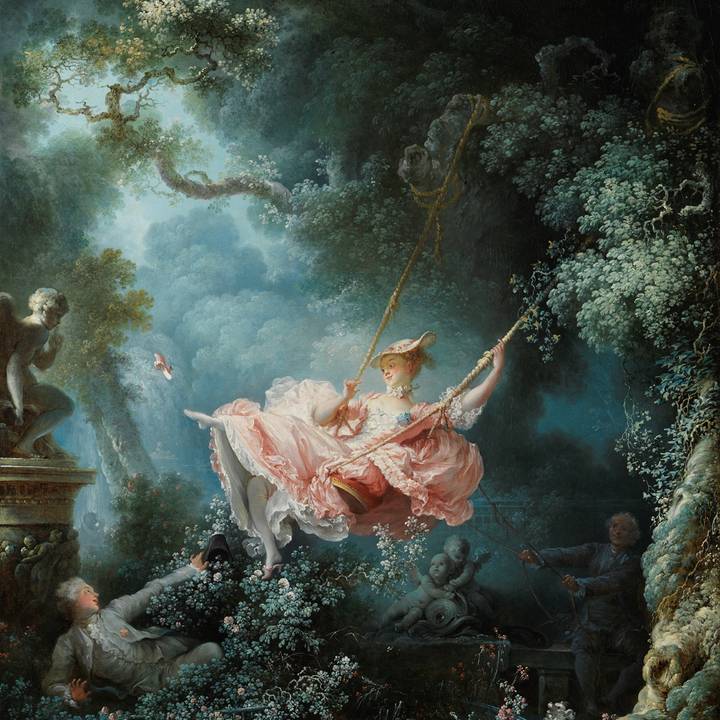Between August and November 2021, The Swing underwent sensitive conservation in an effort to reverse the natural aging process, which had diminished the painting’s appearance. Because of its importance, the painting is rarely off public display, and it had not been cleaned for over one hundred years. As a result, the paint surface had become obscured by severely yellowed varnish, while old retouching had become visible. Onsite conservation was thus planned to address this issue. The project thus represented an exciting direction for conservation at the Wallace Collection, as no other painting had ever been cleaned and conserved onsite at the museum.
The planning process leading up to conservation was lengthy and considered. A clear set of objectives was defined in order to measure success. First, the goal was to protect and stabilise this important painting. Second, there was a clear need to restore the painting’s original appearance. Third, this was a unique opportunity to learn more about this key work and how it had been made. At this early stage, the condition of the painting was carefully assessed using a microscope and scientific analysis such as X-radiography to ensure its safety throughout the project. Before cleaning was undertaken, a committee of Wallace Collection trustees were invited to witness the results of test ‘cleaning windows’ in selected areas. Treatment progressed with this panel’s support.
Project conservator Martin Wyld determined the most efficient method of varnish removal on the basis of careful, reversible tests. Cleaning then proceeded over the whole surface, removing the discoloured natural resin varnish that had likely been in place for a considerable time period. The original surface had suffered remarkably few paint losses, likely as a result of the fact that the painting has spent the majority of its life in Manchester Square.
The removal of yellowed varnish and old overpaint transformed The Swing, revealing the lushness and freshness of Fragonard’s original paint surface. The whites and pinks of the young woman’s dress are crisper and more sparkling. The flush of pink on the younger gentleman’s face is more pronounced, while the shimmering blue of the fabric on the older gentleman’s clothes add a level of sumptuous detail that was previously missing. The process also restored the painting’s original sense of depth and perspective. The woman on the swing now leaps out of the painting.
If the viewing experience has now been greatly enhanced, the project has also enhanced our knowledge of Fragonard’s working process. Little was noted in the way of underdrawing (an artist sketch in a dry medium such as charcoal, plotting out the composition), suggesting that Fragonard worked confidently and skilfully, directly on the canvas. Scattered pentimenti (artist changes) were noted for the first time. The woman’s knee and petticoat was adjusted as was the young admirer’s right shoulder.
Use the slider to discover for yourself the transformation – and restoration – of The Swing.






